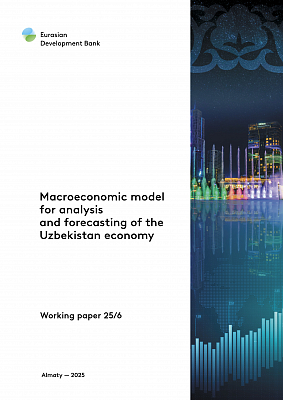Macroeconomic model for analysis and forecasting of the Uzbekistan economy

The model developed by the EDB has sufficient flexibility, which is convenient for analyzing the economy of Uzbekistan; besides, it maintains a high level of theoretical rigor. The main features of the model include:
1) analysis of the impact of global, regional and internal shocks on the economy of Uzbekistan;
2) assessment of the impact of fiscal, monetary and exchange rate policies on key macroeconomic indicators;
3) generation of scenario forecasts for the medium-term development of the Uzbekistan economy;
4) assessment of risks faced by macroeconomic stability.
In general, the model of the Uzbekistan economy is similar to other IMS models and includes blocks of aggregate demand, aggregate supply, fiscal sector, monetary policy, and labor market. Money transfer sector was made a separate area, considering its impact on the country's economic performance. The model parameters were calibrated in such a way as to take into account the stylized facts about the Uzbekistan economy, monetary and exchange rate policy regimes, as well as the functioning of the transmission mechanism.
The working paper includes the description of the Uzbekistan model integration into the model complex used by the EDB. It also dwells on the economic specifics of Uzbekistan taken into account by the model. The paper also specifies the model structure and the calibration of its parameters. There is a consideration of methodological aspects, and the analysis of the model's sensitivity to various macroeconomic shocks, as well as its predictive capability. The appendices provide detailed statistical data together with the references and a system of equations.
